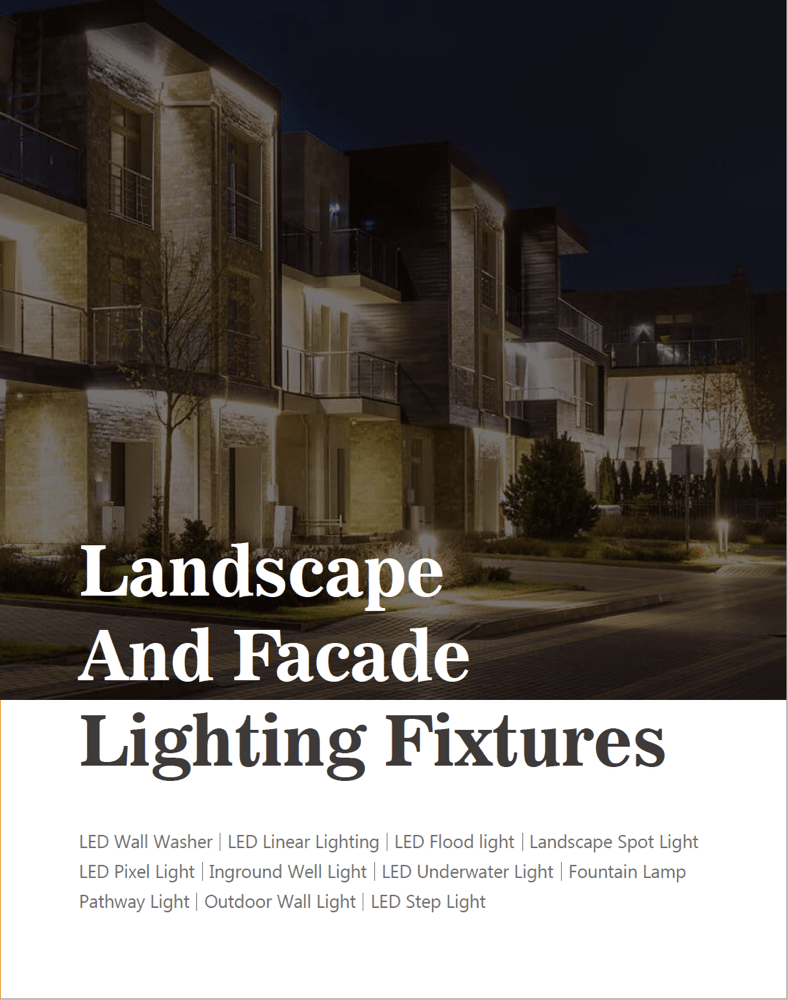When it comes to lighting, there are two main types: symmetrical and asymmetrical. Both have unique characteristics and are designed to create a distinctive visual effect. Join us as we uncover the differences, pros and cons and different applications of these lighting techniques.
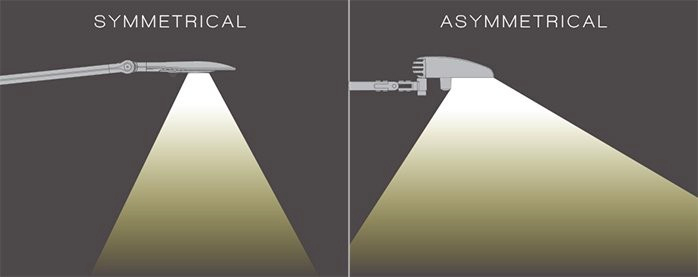
Imagine you’re strolling through an art gallery. As you approach a breathtaking painting, you notice something unique: it’s not just the art that’s capturing your attention, but also the way it’s illuminated. On one wall, a painting is bathed in an even, gentle light, showcasing every detail uniformly. Adjacent to it, another masterpiece is lit dramatically, with one side more intensely highlighted, casting intriguing shadows and drawing your gaze to specific details. This is no accident. It’s the magic of lighting, where the choice between symmetric and asymmetric illumination can dramatically change your experience. Just as artists use brushes and paints, lighting designers use different lighting techniques to create moods, evoke emotions, and highlight beauty. Ready to delve deeper? Let’s uncover the mysteries of symmetric and asymmetric lighting.
What Is Symmetric Lighting?
Step into the well-balanced realm of symmetric lighting. Visualize a light that casts its glow uniformly, shining evenly in all directions. This type of lighting is key in settings where a steady, non-distracting light is essential. Traditional pendant lights, ceiling lamps, and certain types of LED floodlights and downlights are typical fixtures that employ symmetric lighting.
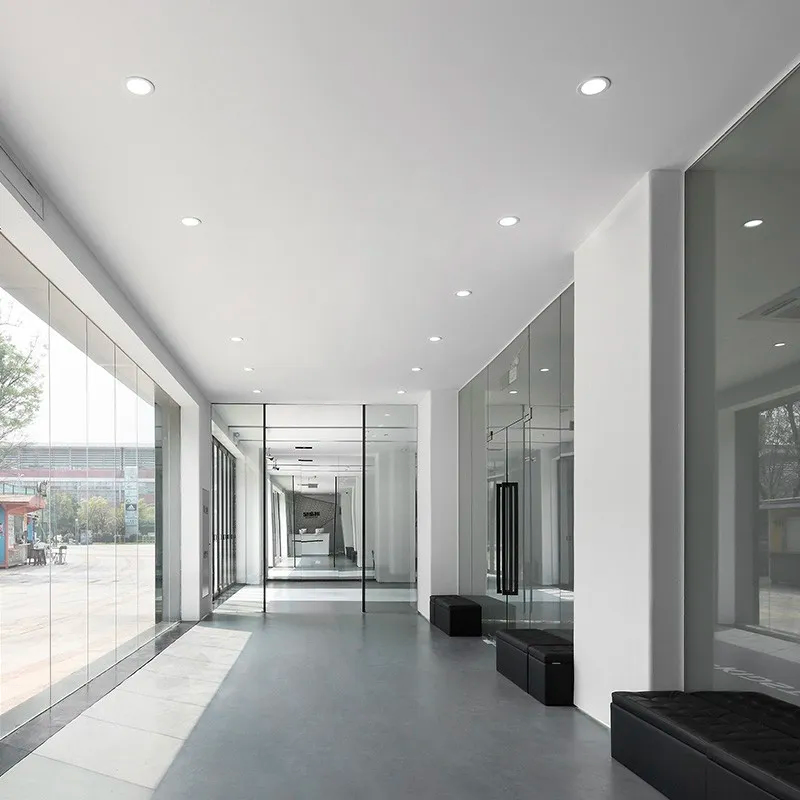
What Is Asymmetric Lighting?
Dive into the intriguing world of asymmetric lighting. Picture a light that’s directed with purpose, illuminating specific areas while reducing glare and light spillage elsewhere. This strategic approach is essential when even illumination isn’t suitable. Fixtures like LED wall washers, flood lights, downlights, linear lights, track lights, and facade lights harness the power of asymmetric lighting.
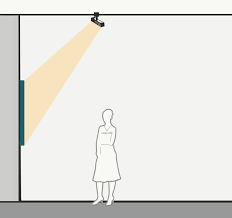
What Is the Difference between Asymmetrical and Symmetrical Lighting?
Symmetrical Lighting: Provides an even distribution of light, commonly used in areas like lobbies, hallways, or general workspace environments where consistent illumination is essential.
Asymmetrical Lighting: Offers uneven light distribution, directing more intensity in specific directions. Ideal for emphasizing features, such as artwork in galleries, stage performances, or architectural details of buildings.
Here’s a structured table that captures the differences between asymmetric and symmetric lighting:
| Feature/Aspect | Symmetric Lighting | Asymmetric Lighting |
|---|---|---|
| Direction of Light | Spreads in all directions equally. | Enlightens a specific area in a definite direction. |
| Ideal Application | Illuminating a large area. | Focusing on a small area. |
| Glare | Causes both intended and unintended glare. | Reduces unintended glaring. |
| Light Pollution | Causes light pollution. | Prevents light pollution. |
| Beam Angle | Creates a wider beam angle. | Produces a narrow beam angle. |
| Usability | Adequate for general lighting. | Effective for the workplace and street lighting. |
| Eye Strain | Causes eye strain due to unnecessary glaring. | Reduces eye strain. |
| Brightness Consistency | Equal brightness in all directions. | Different brightness in different directions. |
| Energy Efficiency | Can waste energy. | More energy-efficient. |
| Backlight Production | Creates backlighting. | Produces nearly no backlight. |
| Best For | General lighting of a large area, Accent lighting. | Focusing on a specific region, Workspace, and Street lighting. |
This table provides a side-by-side comparison of the two lighting types, making it easier to understand the specific characteristics and applications of each.
In essence, while symmetrical lighting aims to provide an even distribution of light, asymmetrical lighting is designed to focus and emphasize, making each suitable for different scenarios and requirements.
Symmetric Lighting Vs. Asymmetric Lighting – Which One Is Better?
When deciding on the best lighting method for a space, it’s often a toss-up between symmetric and asymmetric lighting. Both have their merits, but their effectiveness largely depends on the application and desired ambiance.
Symmetric Lighting shines consistently, offering a calming and predictable illumination—like the gentle, even glow in a cozy cafe where patrons enjoy their reading without shadows casting on their pages.
Asymmetric Lighting, in contrast, emphasizes drama and focus. Imagine walking into a modern art gallery where individual artworks are accentuated, making them pop and capturing visitors’ attention immediately.
Now, let’s dive deeper:
Pros & Cons Of Symmetric Lighting:
- Pros:
- Provides even and consistent illumination throughout a space, much like the comforting glow in a home’s living room where every corner is consistently lit.
- Reduces shadows and minimizes dark spots, reminiscent of a well-lit classroom where students can read from any corner without strain.
- Works well for general lighting needs, creating a calm and balanced environment, like in a retail store where customers can view products without being distracted by shadows.
- Cons:
- Lacks dramatic effect. In an art exhibit, for instance, all pieces would receive equal attention, potentially causing standout pieces to be overlooked.
- Can feel mundane in spaces like trendy bars or lounges where a bit of drama might be desired.
- Might wash out details in settings like a museum where certain artifacts might benefit from spotlighting.
Pros & Cons Of Asymmetric Lighting:
- Pros:
- Dramatic visual impact, like in theaters where a lead actor is highlighted during a pivotal scene.
- Creates depth and dimension in spaces like photography studios, where models are often lit to emphasize certain features.
- Flexible in places like exhibitions, allowing curators to shift focus based on the importance of different displays.
- Cons:
- Potential for unwanted light spill, which might be problematic in residential areas where one wouldn’t want light pouring into a neighbor’s window.
- Demands more design consideration; for example, in a restaurant, incorrect placement might cast unwanted shadows on diners.
- Might create unevenly lit areas in community spaces like libraries, causing certain spots to feel neglected or less inviting.
Where To Use Symmetric Lighting?
Symmetric lighting, characterized by its balanced and consistent illumination, casts light uniformly in every direction. Such even distribution is essential in various settings demanding a calm, steady ambiance. Here’s an exploration of the diverse scenarios where symmetric lighting truly shines:
- Residential Interiors: Symmetric lighting graces our living rooms, bedrooms, and other home spaces, ensuring a consistent and warm atmosphere. This uniformity makes rooms feel inviting, ensuring every corner is adequately lit.
- Lobbies and Atriums: Expansive spaces like hotel lobbies, corporate foyers, and atriums thrive under the glow of symmetric lighting, emphasizing clarity and creating an open, welcoming ambiance.
- Conference Rooms: The importance of clear visibility during meetings or presentations is paramount. Symmetric lighting aids this cause, making sure every participant can see and be seen, promoting effective communication.
- Libraries and Study Areas: Places dedicated to reading and studying, like libraries or personal study areas, benefit from the non-distracting, consistent illumination that symmetric lighting provides.
- Dining Areas: Be it in restaurants or home dining rooms, the balanced light from symmetric fixtures creates a conducive atmosphere for leisurely meals and conversations.
- Retail Spaces: Stores and shopping malls often employ symmetric lighting. Its even illumination ensures all products are showcased uniformly, facilitating a seamless browsing experience for customers.
- Outdoor Events and Large Open Spaces: Whether it’s a fair, a function, or any outdoor gathering, symmetric lights efficiently brighten large expanses, ensuring safety and clarity for all present.
- Storage Facilities: Symmetric lighting is invaluable in warehouses where items are stacked closely together. The even spread of light ensures every item is visible, minimizing the chances of mishaps or errors.
- Open Car Parks: Parking lots use symmetric lighting to cast a uniform glow over all vehicles, aiding vehicle owners in spotting their cars amongst a sea of others.
- Outdoor Plazas and Courtyards: These areas, whether for relaxation or hosting activities, require the consistency of symmetric lighting for nighttime safety and visibility.
Thanks to its balanced nature, symmetric lighting remains a staple in scenarios requiring clarity, uniformity, and a sense of calm. Its ability to reduce shadows and provide consistent illumination is what makes it a popular choice in a myriad of settings.
Where To Use Asymmetric Lighting?
Asymmetric lighting offers a tailored approach to illumination, focusing light where it’s most needed while reducing spillage elsewhere. From functional spaces like workstations to more specialized setups like theaters, its versatile application is evident. Let’s delve into some of the prominent areas where this form of lighting shines brightest:
1. Art and Architecture Showcases:
- Asymmetric lighting brings out the beauty and detail in artworks, sculptures, or architectural marvels. It’s the go-to choice in galleries and museums to emphasize the unique aspects of a piece while minimizing distractions.
2. Workstations:
- Be it an office desk, a study corner, or a kitchen cooking station, asymmetric lighting ensures precise and directed illumination, optimizing focus and productivity.
3. Retail Displays:
- Captivating window displays in shops can entice passers-by. Asymmetric lights make merchandise pop, drawing attention to the latest products or offerings.
4. Stadiums:
- Sports and events require clear visibility over the field or stage. Asymmetric lighting ensures the action is brightly lit while minimizing glare for the audience.
5. Streets:
- Streetlights are perhaps the most ubiquitous example. They illuminate specific road portions to ensure safety, all the while minimizing light pollution.
6. Theatres:
- In theaters, the magic happens on stage. Asymmetric lights emphasize performances, ensuring the audience’s attention remains where the drama unfolds.
7. Interior Accents:
- Asymmetric lighting can be a design element, spotlighting room corners or specific decor items, adding depth, contrast, and visual appeal to interiors.
With its ability to direct focus, reduce glare, and minimize light pollution, asymmetric lighting proves invaluable in both functional and aesthetic applications.
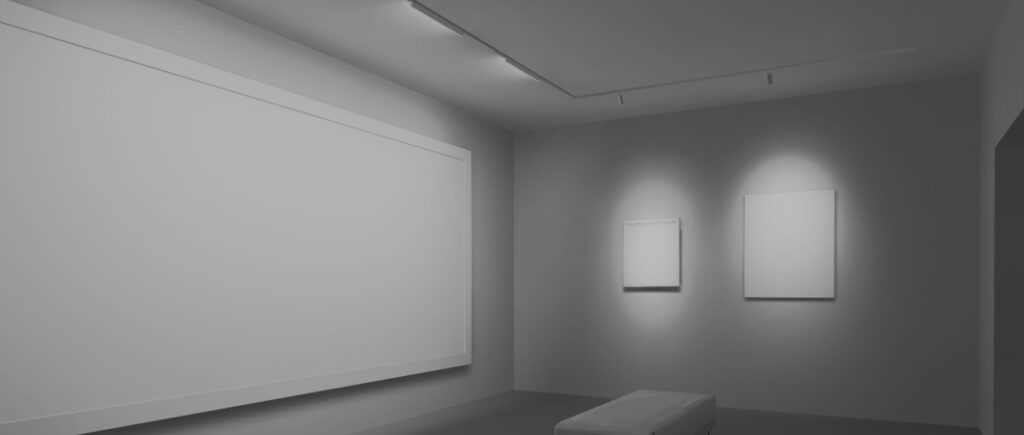
How to Identify Symmetrical and Asymmetrical Lighting?
Curious about how to differentiate between symmetrical and asymmetrical lighting? You’ve come to the right place! Spotting the difference is easier than you think. Look for directional light fixtures or luminaires that cast light in a specific direction for asymmetric lighting. In contrast, symmetric lighting fixtures typically have diffusers or reflectors to distribute light evenly in all directions. Here are some handy tips to help you spot the difference:
1. The Way Light Spreads:
- Symmetrical Lighting: Think of it like a hug that goes both ways. The light shines evenly forward and backward, giving everything an even glow. If the light seems to be shining everywhere with no favorites, that’s symmetrical lighting.
- Asymmetrical Lighting: It’s more like pointing with one hand. The light mainly goes one way and not the other. If a light seems to be playing favorites, lighting up just one spot or direction, it’s asymmetrical.
2. The Shape of the Glow:
- Symmetrical Lighting: It’s like a wide-open smile, spreading equally on both sides. If the light seems to have a broad, welcoming angle, it’s symmetrical.
- Asymmetrical Lighting: This one’s more like a wink – focused and specific. If the light has a sharper, more precise angle, favoring one side or spot, that’s your cue for asymmetrical.
3. Watch Out for the Glare:
- Symmetrical Lighting: Sometimes it can be like an overexcited friend who shines a bit too brightly everywhere. If the lighting seems to be a bit too glaring in places where it’s not needed, that’s symmetrical.
- Asymmetrical Lighting: It’s like a focused student, shining its light only where needed. If the glare is specifically on one object or area, that’s asymmetrical doing its job.
4. Shadow Play:
- Symmetrical Lighting: Imagine a sunny day with the sun shining overhead. Everything’s lit up, with no particular dark corners. That even lighting? That’s symmetrical.
- Asymmetrical Lighting: Picture a campfire, bright in the middle with darkness around. That’s asymmetrical lighting for you, lighting up a certain spot and letting the surroundings fade.
There you have it! Just remember these simple clues, and you’ll be a lighting detective in no time!
Conclusion:
Think of lighting design as the magic wand in the world of interiors. Symmetric lighting is the friendly character, ensuring every corner gets its share of light. It doesn’t pick favorites; instead, it ensures that everyone in the room feels warm and cozy, casting a harmonious and even glow everywhere.
On the other hand, with asymmetric lighting, it’s like having a spotlight that shines directly on the star of the show, creating drama and highlighting the ‘wow’ moments. Picture it as the main actor on a stage, capturing everyone’s attention.
So, are you aiming to bathe the room in a comforting glow or put something in the limelight? Knowing the difference between these two lighting heroes will help you set the perfect stage. After all, in the grand theater of design, lighting plays a starring role. With the right choices, you can use light to paint, shape, and animate any space.
In the end, whether it’s an all-embracing glow or a dramatic highlight, the dance of light has the power to transform a room. Dive into the world of lighting, play around, and watch spaces come alive!
